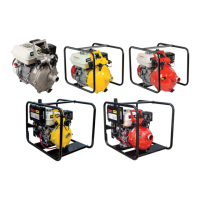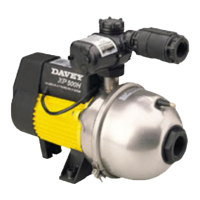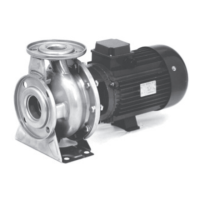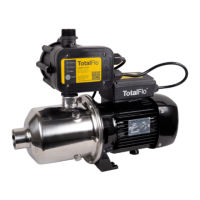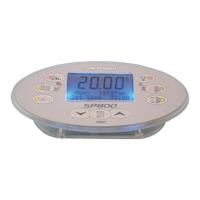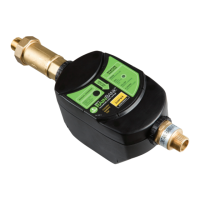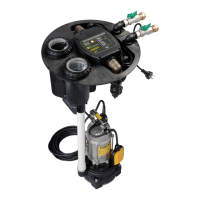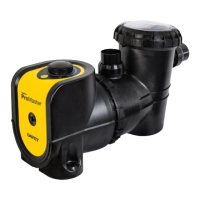4
1. INSTALLATION
1.1 Pump location
For most efcient operation, site the Fireghter
pump as close to the water source as practical. It is
essential for the correct function of the engine that
it be located on a horizontal surface. If allowed to
run at an inclination, the oil lubrication system of
the engine may not operate correctly. Subsequent
engine failure would not be covered by the
manufacturer’s guarantee, refer to section 5.1.
The pump should be positioned in a well-drained
location to avoid possible property damage by leaking
hose ttings, pump seals, spilled engine fuel etc.
1.2 Suction pipe
A reinforced, or non-collapsible hose should be used
for the pump suction. The minimum suction pipe
size should be 38mm (1½”) I.D. for petrol Fireghter
models up to 200cc and diesel Fireghter models
up to 320cc. Larger models should use 50mm (2”)
I.D. suction pipe size. A strainer should always be
tted to the bottom of the suction pipe. The strainer
should be kept out of sand, mud etc…, to avoid
particles being drawn into the pump and causing
damage by abrasion. Always locate the pump so
that the rise of suction pipe from the water to pump
is even with no humps, or hollows where air may be
trapped. All pipe connections must be air tight for
best priming and operation. Check that washers in
nuts and tails, or quick connectors are in good order.
Air tight suction: In permanent installations this
is something usually achieved once and forgotten
about. The use of correctly applied thread tape is
usually the key. In portable pumps, it is something
more frequently encountered, so attention to some
simple rules will make it easier to achieve:
• Always keep rubber gaskets in good condition,
especially important on hose tails and quick
connectors;
• Where gaskets must seal on the face of the inlet,
ensure the mounting face is at and not damaged;
• Make sure suction hoses do not have holes or
splits. Just because water does not escape from
the hole does not mean it won’t allow air into the
hose when priming.
Evacuate the air: Even the most powerful pump will
experience problems trying to evacuate the air from
itself and its suction line if it has nowhere for the air to
go. To help clear the air and properly prime the pump:
• Make sure the Fireghter pump has an open
discharge to atmosphere nearby to allow the
evacuation of the air. Use one of the outlets
equipped with a ball valve if possible;
• Isolate the rest of the discharge pipework until
the Fireghter pump is properly primed. This is
especially important in self-priming installations
where the Fireghter pump may regularly be
needed to pump water through a long discharge
line. Once it is clear the Fireghter pump has
established prime the outlet to atmosphere can be
shut and the major discharge line opened.
Note: Failure to isolate the major discharge line
during priming may result in a “false” prime, or
failure to prime at all. This may result in closed
head operations – see above notes;
• For Fireghter pumps, it is very important they run
at full speed during the priming operation. Failure to
run at full speed may result in failure to prime etc.
Allow up to 3 minutes for long or deep suctions. If
the Fireghter pump fails to prime, then it may be
due to the Fireghter pump ap valve not seating
properly, an air leak in the suction pipe or ttings, a
blocked suction pipe air locking (as above), or the
bottom end of the pipe embedded in mud.
These steps are where mistakes are commonly
made. Failure to correctly establish prime can result
in unsatisfactory pump performance, and in some
cases the Fireghter pump will run in a closed (or
“dead”) head circumstance. Closed head operation
can result in the remaining water in the pump being
heated to dangerously high temperatures.
1.3 Delivery pipe
Care should be taken on correct selection of pipe
pressure rating as single stage (yellow) Fireghter
pumps can deliver pressures up to 650kPa (93psi).
Two stage (red) Fireghter Plus pumps are capable
of pressures up to 1,135kPa (165psi).
1.4 Pump priming
Fireghter models with 3-way outlets: use a top
discharge port as a priming port as shown in gure 1.1.
Figure 1.1
Fireghter models with 4-way outlets: have a
bayonet style tment, with a safety release mechanism.
• To insert the priming plug, ensure the handles on
the plug are in line with the engine shaft, or pointing
towards the engine as shown in gure 1.2.
Figure 1.2

